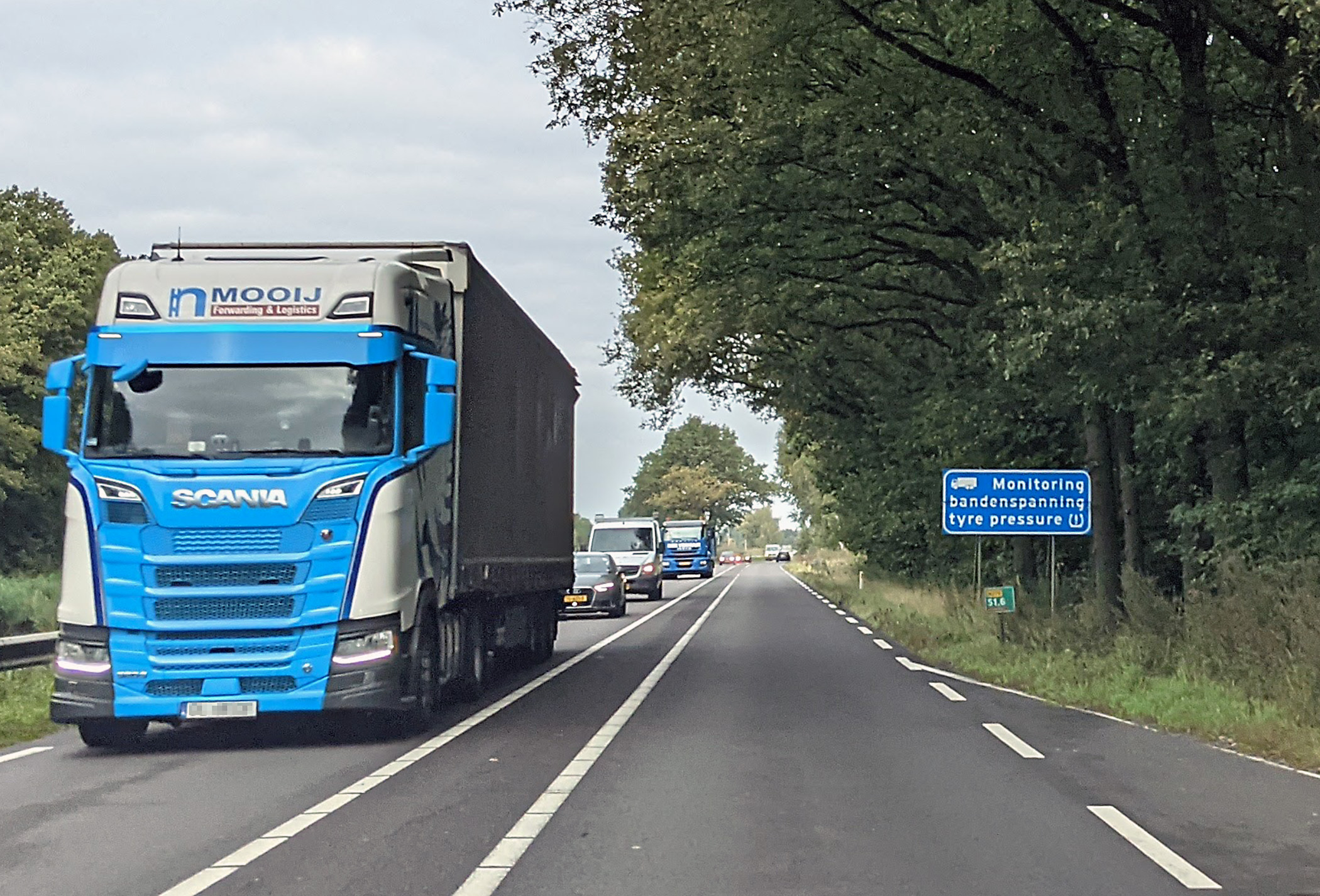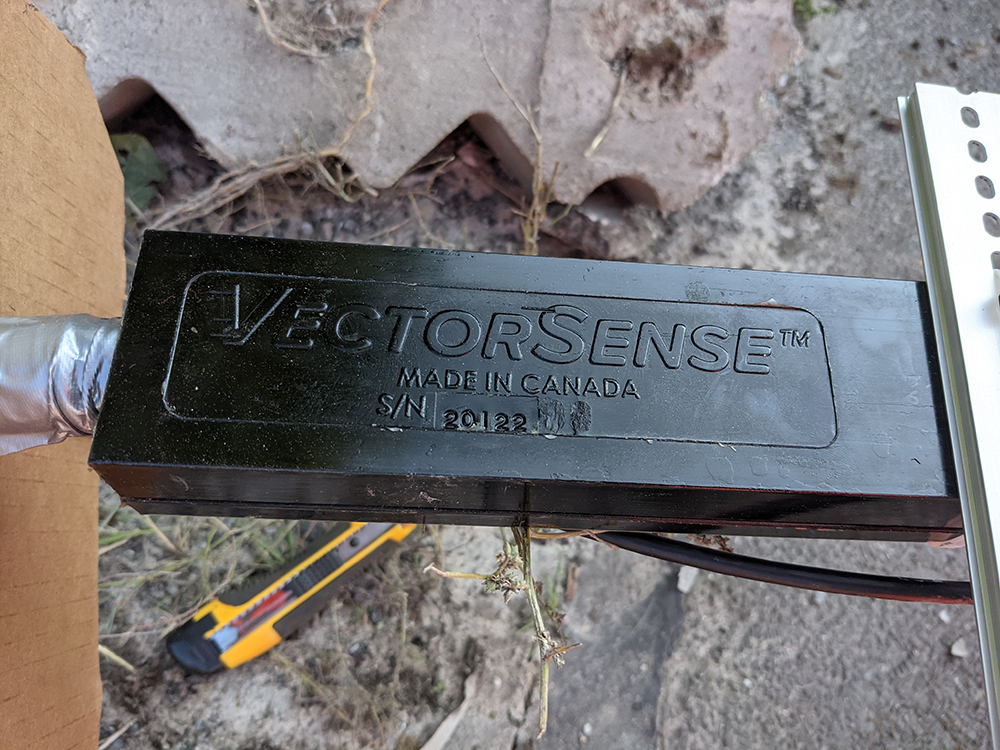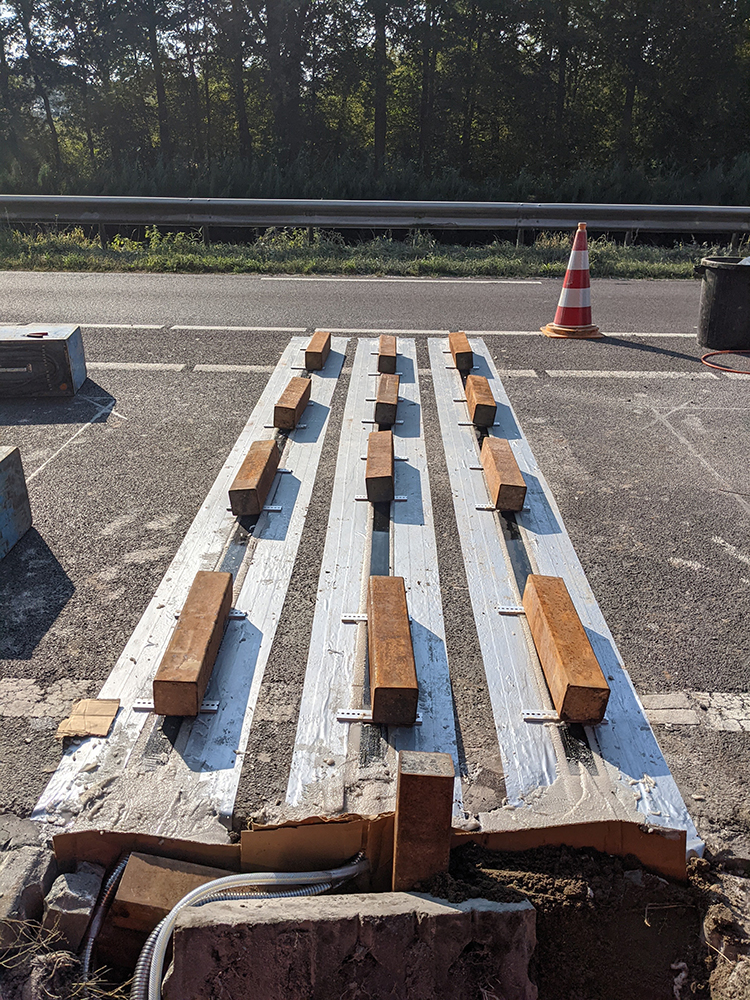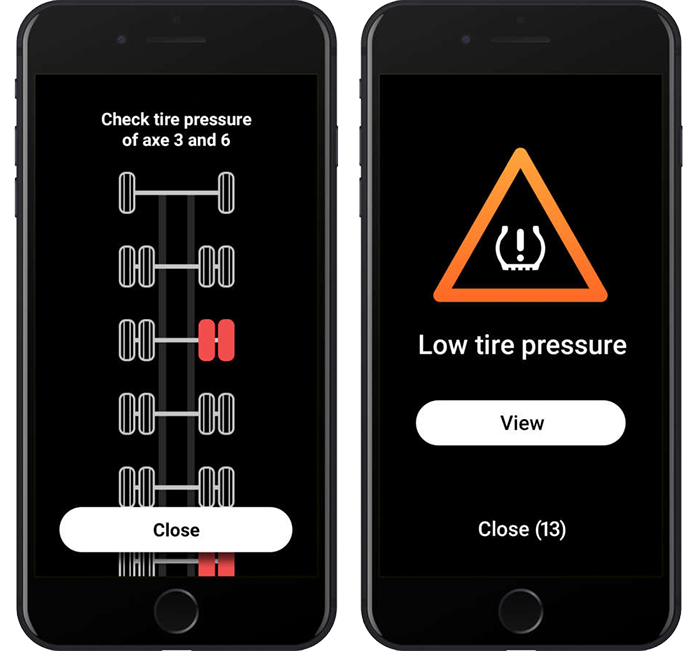
In the Netherlands, IRD, Inc. has been engaged in an innovative project which monitors tyre pressures in live traffic lanes. The project provides direct feedback to vehicle occupants and improves safety and environmental performance by influencing tyre awareness and maintenance.
Advances in design, materials and manufacturing have resulted in vehicle tyres that perform consistently better in all weather conditions and across their whole lifetimes. Unfortunately, significant uplifts in performance and durability also mean that tyres have come to be seen as ultimately dependable and their maintenance is often neglected.
Most commercial vehicle operators follow rigorous tyre safety regimes, remaining mindful of safety and fuel economy, but, in a sector characterised by tight margins, some operators are seduced by the possibility of shortcuts and saving money. Except for regular service checks, many private vehicle owners, meanwhile, do not take the opportunity to check tyre inflation pressures from initial fitting to end-of-life replacement.
For a majority of the time, this causes no perceptible issues. However, such behaviour introduces both a safety risk and environmental penalties. Incorrectly inflated tyres can affect vehicle handing, cause overheating leading to delamination and failure, and, if under-inflated, increase rolling resistance. With increased rolling resistance comes heightened safety risks, greater fuel consumption and higher greenhouse gas emissions.
Deployments of in-pavement tyre monitoring technology can deliver big improvements in safety, efficiency and user experience without the need to stop vehicles for inspection. They can help to identify unsafe or environmentally damaging conditions, and also oblige or precipitate changes in operational and personal behaviour.
These changes are enduring and extremely cost-efficient, in the sense that proper tyre inflation and good tyre management do not necessarily require comparatively large-scale capital investments — rather, they are the product of behavioural change amongst drivers and fleet owners/operators. And, although punitive action might be necessary in the case of extreme or persistent offenders, it need not always be the solution. Often, public education — simply providing individuals and organisations with the appropriate information to act upon — is sufficient. This has been the subject of a pilot programme in the Netherlands.
 TACS in the Netherlands
TACS in the Netherlands
There, since 2016, a series of eight interrelated sub-projects have been running as part of the SmartwayZ.NL mobility programme.
The objectives of SmartwayZ.NL are to improve road safety, sustainability and accessibility (traffic flows). The programme includes a combination of smart mobility solutions and infrastructure improvements, and brings together public and private organisations as well as academia. It provides a cooperative framework that supports the rapid acquisition of practical experience, knowledge transfer and the delivery of positive outcomes along major corridors in the Netherlands.
This project has been looking at the use of a ‘dynamic tyre pressure meter’. This is IRD’s Tyre Anomaly and Classification System (TACS). The motivation behind the installation was a study conducted in 2017 that indicated that 41% of incidents involving commercial vehicles in the southern Netherlands were caused by tyre problems. This is also consistent with national data.
 The enabling technology, VectorSense, combines in-road sensors and customised analytics software to enable non-intrusive examination of truck tyre conditions in live lanes at highway speeds (TACS can examine tyre conditions on vehicles travelling at up to 100mph/162kph).
The enabling technology, VectorSense, combines in-road sensors and customised analytics software to enable non-intrusive examination of truck tyre conditions in live lanes at highway speeds (TACS can examine tyre conditions on vehicles travelling at up to 100mph/162kph).
The sensors, which are embedded in the roadway at 90° to the direction of travel, create a 3D imaging profile of tyre conditions for each axle and each tyre of the vehicle. The footprint data is converted into an intermediate calculated value and a proprietary algorithm is applied to this value to arrive at an approximate tyre pressure and tyre condition. The contact patch for each tyre is examined in detailed slices which can be combined to provide a comprehensive data view of the tyre. The data can also be assembled to provide a map which indicates the location of any problem tyres.
Supporting decision-making
In some deployments around the world, TACS provides an enforcement capability. The approach taken in the Netherlands concentrates instead on condition management and providing drivers and fleet operators with decision-quality information. There has also been a focus on the detection of ‘inefficient’ tyres — those that are close enough to regulation tyre pressure to not provide a safety threat but which represent a target for potential improvement in emissions and fuel consumption through better operational practices.
Drivers are advised if the tyres of their vehicles fall within the inefficient pressure range via TruckMeister, a smart phone app, which, in addition to being a notification mechanism for under-inflated tires/fuel-inefficiency, acts as a fleet management platform to support effective and efficient vehicle operations.
 Tire safety issues are communicated by means of a Dynamic Message Sign (DMS) located at the roadside downstream of the sensor. The DMS provides immediate feedback to drivers — ‘Tires OK' or, in the case of deflated tyres, ‘Check Tires’. This is an important element in raising the probability of corrective action, because in many cases the tractor and trailer components of a commercial vehicle are owned by different entities. Providing immediate feedback to drivers enables them to act as appropriate, thereby ensuring safe and efficient travel.
Tire safety issues are communicated by means of a Dynamic Message Sign (DMS) located at the roadside downstream of the sensor. The DMS provides immediate feedback to drivers — ‘Tires OK' or, in the case of deflated tyres, ‘Check Tires’. This is an important element in raising the probability of corrective action, because in many cases the tractor and trailer components of a commercial vehicle are owned by different entities. Providing immediate feedback to drivers enables them to act as appropriate, thereby ensuring safe and efficient travel.
In addition to providing driver feedback, the system enables a database to be accumulated that quantifies the extent of the inefficient tyre problem. It also provides a way to monitor behavioural change, as it is possible to determine the number of vehicles with inefficient/unsafe tyres both before and after a public message initiative has been implemented.
Little changes, large gains
The effects of better tyre maintenance on a single or small numbers of vehicles may be regarded as trivial, however wholesale change across a regional, national or global driving population can deliver significant, positive environmental effects, both when balanced against the technological investment required and in absolute terms. Although commercial/heavy goods vehicles have tended to be the focus of tyre inspection, the concept has application across all vehicle types and in urban/smart communities as well as on strategic roads.
For example, it is estimated that more than 60% of vehicles on the roads in the Netherlands have improperly inflated tyres. Best estimates suggest that there are at least 1.4 billion vehicles around the world today, so if we extrapolate the data from the Netherlands across the rest of the world it is likely that more than 84 million vehicles have improperly inflated tyres or tyres that are in poor condition. This is likely to be a conservative figure, given that Dutch drivers and fleet operators are likely to have a higher degree of discipline with respect to vehicle operations and access to a higher level of maintenance facilities than in some other countries.
While it is important to address the entire vehicle fleet, there is especial potential in addressing tyre condition on commercial/heavy goods vehicles. These represent approximately 13% of the global vehicle fleet, or 182 million vehicles. Nevertheless, they offer a significant target for improvement in a number of different ways.
Even in optimum conditions, safety issues are also exacerbated by the size and weight of commercial vehicles. Because of their size, such vehicles consume greater quantities of fuel. They also travel greater distances each year. Consequently, they provide a prime opportunity for fuel and emission savings. It is also likely that inefficient tyres are on their way to becoming non-compliant tyres, which can attract significant fines. Information on tyre condition is therefore especially welcomed by commercial fleet operators.
Where to next?
There is a clear and direct relationship between safety and tyre pressure and condition — and between tyre pressure and condition, and fuel consumption and emissions. A next step is to consider what this means in terms of vehicle operations/movements and the environment.
The Dutch programme has proven the viability of providing drivers and fleet operators with decision-level information on tyre condition.
The technology used — TACS/VectorSense — can also be part of a larger, more closely integrated, smarter mobility management system that combines data from multiple sources and provides the ability to manage all modes of transportation in an integrated and coordinated manner. It can be expected that the application of tyre pressure condition management will be extended in the future to cover all, not just commercial, vehicles as well as a wider range of beneficiaries.
In this case, both drivers and fleet operators are primary beneficiaries of the technology. However, there is another beneficiary group: product and service providers related to tyres. A raised awareness of poor tyre pressure and condition has the potential to generate significant additional revenue and activity for those service providers.
Sponsored content produced in association with IRD











